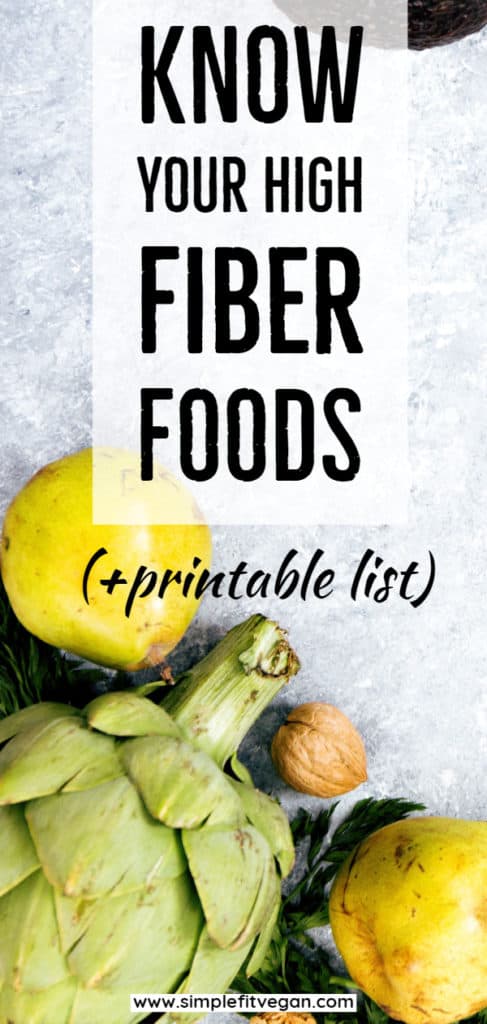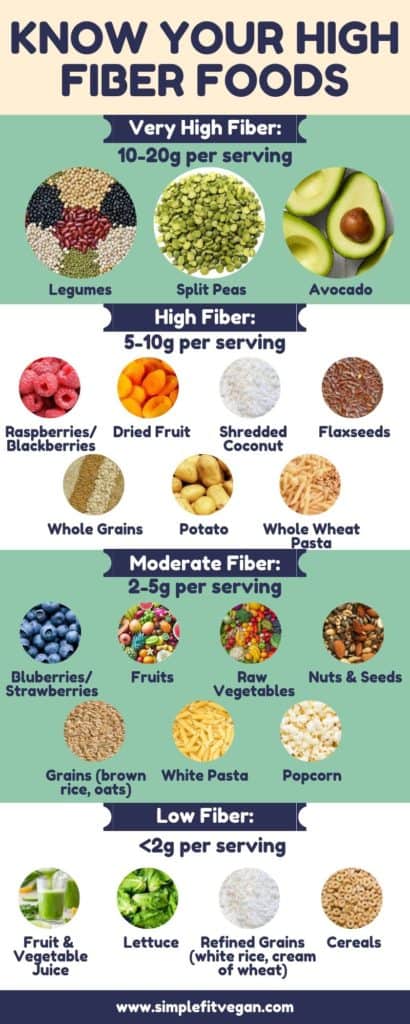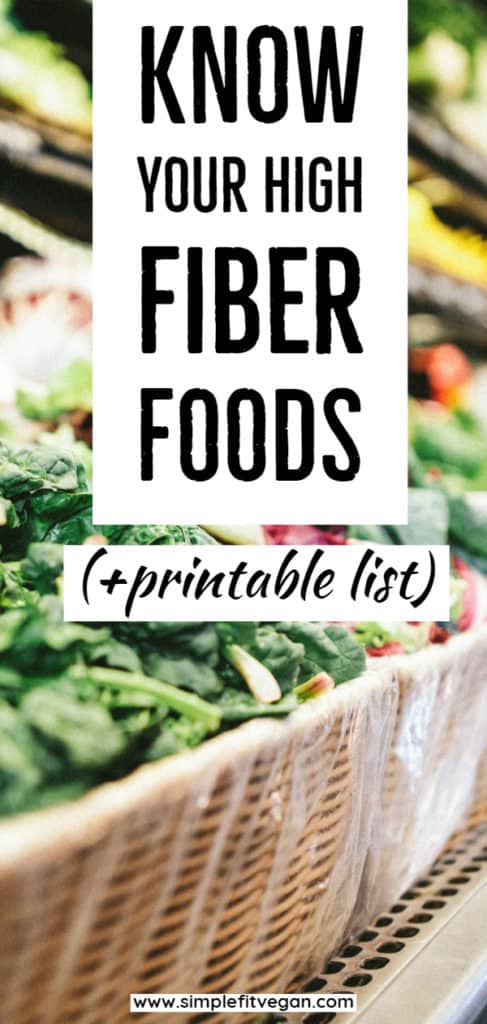My brand new cookbook is out on Amazon! It’s called “30-Minute Plant-Based Recipes” and it’s perfect for busy vegans. Grab it now!

What is fiber?
Fiber is the portion of plant-derived food that cannot be completely broken down by human digestive enzymes in the small intestine. Fiber is a type of carbohydrate that your body can’t digest.
Types of fiber
There’re two types of fiber: soluble and insoluble. All plant foods that contain fiber have both types of fiber. Both soluble and insoluble fiber participate in creating viscous fiber and fermentation in the gut.
What’s viscous fiber? When mixed with water some fiber becomes like a gel (like chia pudding!) in your stomach. Viscosity contributes to the feeling of satiety because it takes more space in your stomach.
Other fiber feeds bacteria in the colon through fermentation. Fermentation produces fatty acids that are absorbed by the bloodstream and used for energy. Another by-product of fermentation is gas.
How much fiber should you have a day
World Health Organization (WHO) recommends 25 grams of dietary fiber per day for adults. This is a minimum recommended amount to prevent chronic diseases.
The U.S. doesn’t have a recommended daily amount specifically for fiber, but generally it’s recommended women consume 25 g of fiber per day and men – 38 g.
Best sources of fiber
Some plant foods have a higher content of fiber compared to others. I’ve listed them below. One thing to note is that it’s important to eat a variety of foods and not just the ones high in fiber. So while it’s good to keep this list in mind, it’s always a great idea to “eat the rainbow”!
The fiber content in various foods, from highest to lowest

Very-high fiber content 10-20 g:
- Legumes
- Split peas
- Avocado
High fiber content 5-10 g:
- Berries (raspberries, blackberries)
- Dried fruit (dried apricots, raisins, prunes)
- Shredded coconut
- Flaxseeds
- Whole grains
- Potato
- Whole wheat pasta
Moderate fiber content, 2-5 g:
- Berries (blueberries, strawberries)
- Most Fruit
- Raw vegetables
- Most nuts and seeds
- Grains (brown rice, oats)
- White pasta
- Popcorn
Low fiber content, up to 2 g:
- Fruit and vegetable juice
- Lettuce
- Refined grains such as white rice and cream of wheat
- Cereals
Benefits of fiber
- Regularity – fiber helps normalize bowel movements.
- Lowers cholesterol.
- Helps control blood sugar levels
- Aids in achieving a healthy weight.
Can you have too much fiber?
Generally, it’s unlikely to consume too much fiber for your body. It may be more of an issue for people who consume added fiber, such as wheat bran, in large amounts.
In modern manufacturing
There’s another type of fiber, called functional fiber, which is synthetically produced by extracting non-digestible carbohydrates from plants.
Some food manufacturers add functional fiber to unhealthy, processed foods in hopes that if consumers see the higher fiber content, they may perceive the food as nutritious.
Eating and Cooking tips
How can you get the most fiber of plant foods?
- Eat one bowl of salad every day. Add leafy greens, raw vegetables such as broccoli, carrots, cucumber, tomatoes, radishes. Top your salad with seeds and add chopped fruit such as apples, strawberries, or grapes.
- Make smoothies. Add vegetables to your smoothies to increase fiber content. Some vegetables that go well in smoothies are zucchini, cauliflower, cucumber, and leafy greens (kale, spinach).
- Minimize the cooking time of vegetables. Vegetables lose their fiber content the longer they’re cooked.
- Eat legumes daily such as beans and lentils. Add them to salads, stews, and veggies patties.
- Eat whole, minimally processed grains such as quinoa and brown rice.
My brand new cookbook is out on Amazon! It’s called “30-Minute Plant-Based Recipes” and it’s perfect for busy vegans. Grab it now!

Leave a Reply